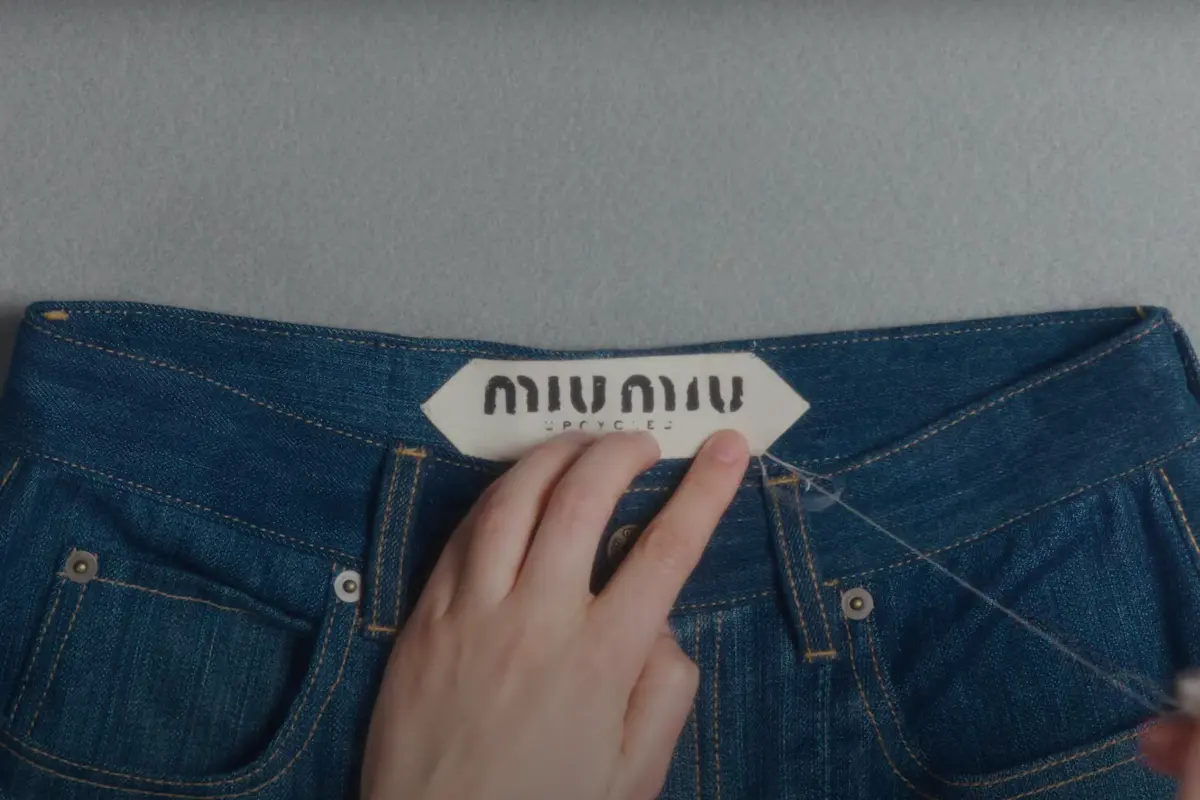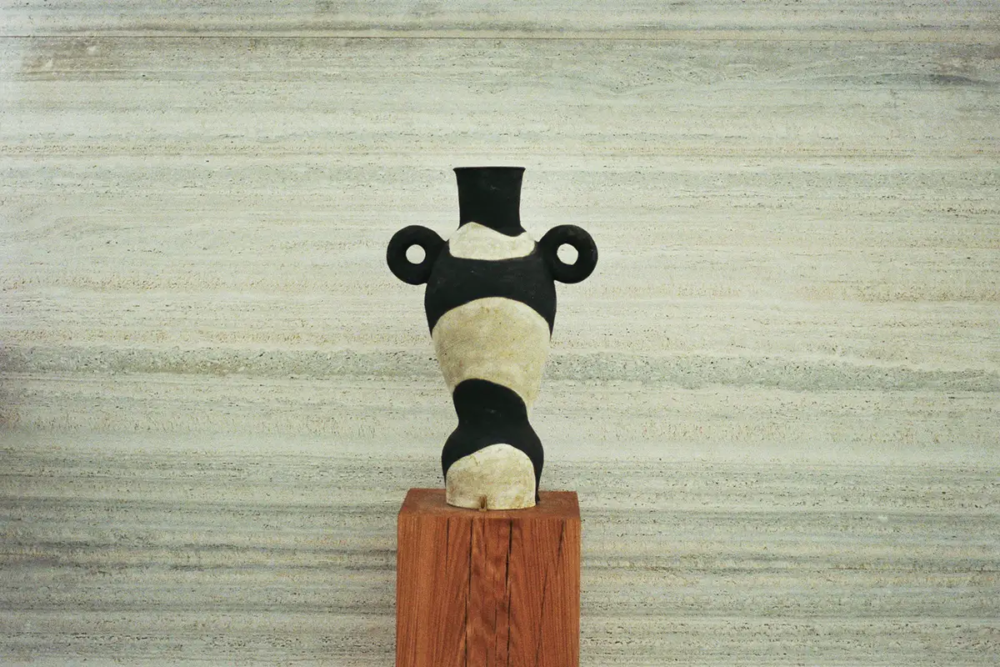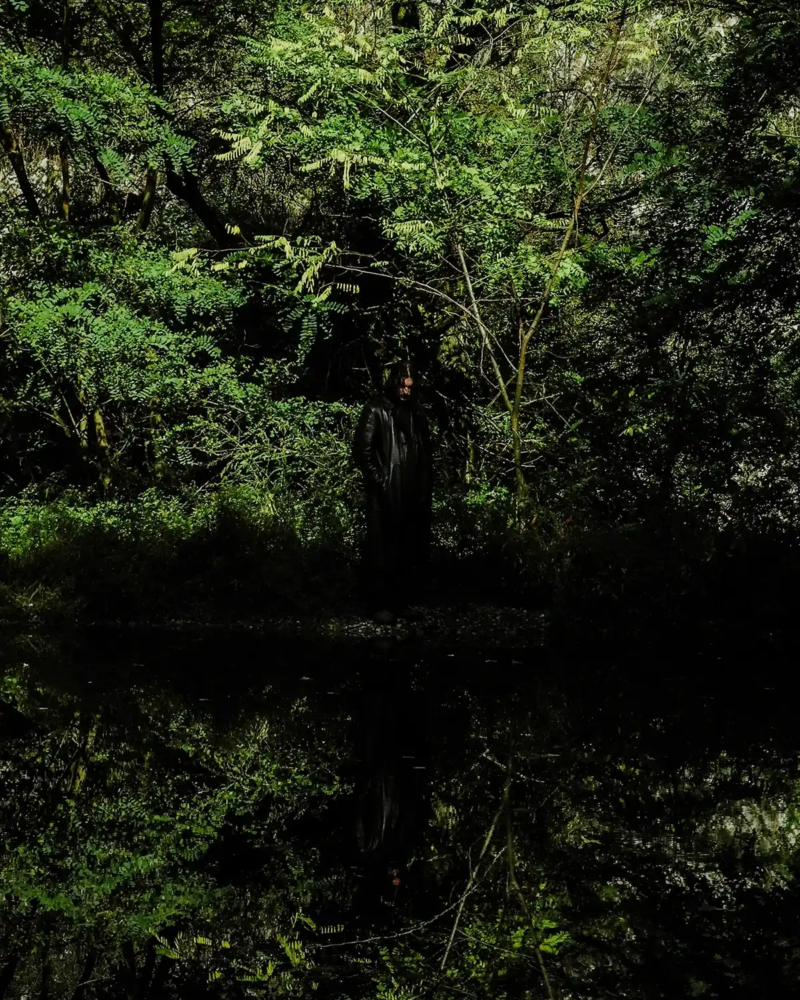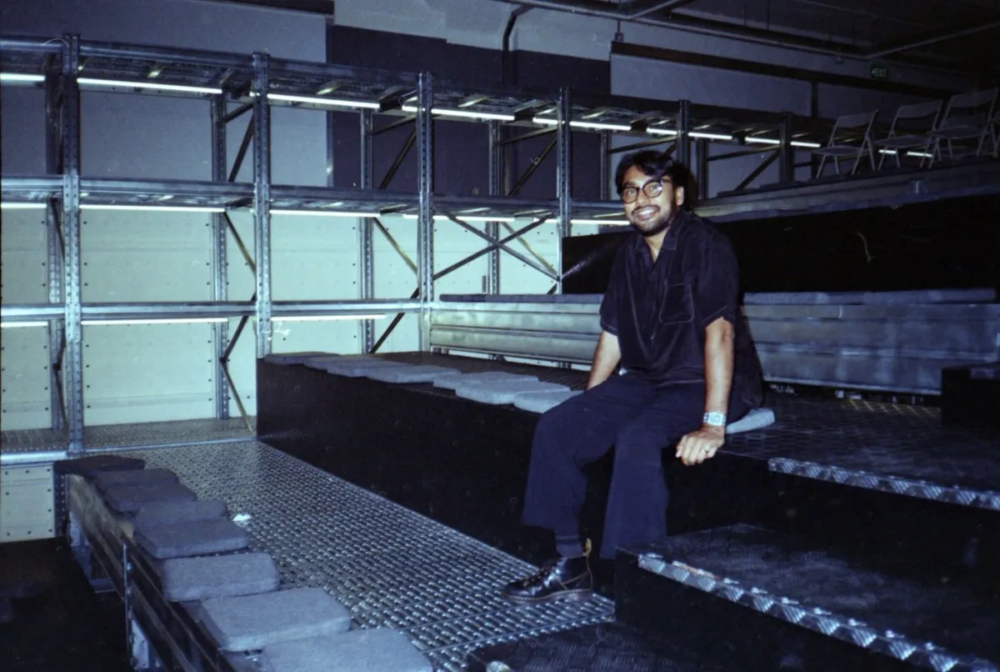
Denim and upcycling stories: from Miu Miu to Vitelli
An upcycled jean emits up to 83 percent less CO2 than a new one – Miu Miu’s latest Upcycled collection and other efforts to explore the potential of vintage denim and other historic fabrics
Upcycled by Miu Miu: the project dedicated to circular design
At the forefront is Miu Miu, which in 2024 launched the fourth edition of the circular design project which began in 2020 with a capsule collection of 80 pieces made with clothing from the 1930s to the 1980s twentieth century sourced in vintage shops scattered throughout the world. Once selected, the garments were studied by the style office and revisited in a contemporary key through Miu Miu’s typical stylistic codes.
Already with the second edition of Upcycled by Miu Miu, the Italian company focused on denim, the most iconic fabric in fashion history, through a collaboration with Levi’s. The project included Levi’s most classic models: the 501® and the Trucker Jacket, all original vintage MADE IN USA from the 1980s and 1990s. Emblematic pieces born in America from work clothes and symbols of youth rebellion from the mid-1950s onwards, have been adapted and personalized by the maison to give life to a play of contrasts between masculine and feminine. This play found its maximum expression on the iconic Levi’s® label reinvented in pink. The 2022-23 edition saw the leather jacket as the protagonist, another symbol of entire generations and youth movements which was often paired with blue jeans.
Denim is the protagonist of the Upcycled by Miu Miu 2024 collection
In 2024 Miu Miu returned to focus on denim through a recovery project that enhances its intrinsic characteristics, such as the durability and roughness of that unique patina that the blue canvas develops over time, making jeans and trucker jackets among the most requested garments on the vintage and second hand market. The pieces in this collection were made with original garments discovered by denim experts and specialists from all over the world. Each garment has been carefully selected for its details, such as fading, stitching, but also for the quality of the canvas and its weight. As in collage, jackets, skirts, and trousers have been unstitched and reassembled with natural suede inserts and visible white stitching.
On a stylistic level, the maison has focused on soft fits and silhouettes, starting with the blouson jackets and remodeled low-waisted jeans. While the scarf tops and micro-shorts are clearly inspired by Miu Miu’s heritage, modern but with retro taste. The snap buttons, on which the Miu Miu logo was engraved, were removed, and reinserted manually one by one. This demonstrates once again how upcycling reduces waste to a minimum, reusing each component and integrating inserts from other discarded materials and clothing. The photographic campaign by Tarek Cassim accompanying the capsule collection is also a visual celebration of the upcycling technique as the silhouettes of the models – Ana Elisa Brito, Wenqing Liu and Alice McGrath – seem to have been cut out and glued in collage style onto another paper-base.
Diesel Upcycling For and GUESS Upcycled Collection: giving new life to denim
Already in 2020, Diesel debuted during Milan Fashion Week with the Diesel Upcycling For capsule collection, where denim was the protagonist. The idea was born from a need: to find a new use for the numerous washing tests and samples that remain unused in the company’s warehouses every year. At the same time, the project wanted to demonstrate to creatives how upcycling can prove to be a winning creative practice. This is thanks to the different interpretations of brands and designers. The launch of the capsule – just one aspect of a broader vision focused on sustainability and circularity pursued for years by Diesel – was also an opportunity to put tailors and workers in the supply chain under the spotlight: at the flagship store in Piazza San Babila, the seamstresses armed with a sewing machine, gave a practical demonstration of upcycling by transforming old fabrics into new items of clothing in front of a curious audience.
In 2022, GUESS – already at the forefront of research and creation of low environmental impact production techniques – launched the Upcycled Collection in collaboration with Homeboy Industries, a rehabilitation and reintegration program in Los Angeles. A collection that combines the ecological cause with the social one. It provided members of the community with the skills and knowledge necessary to transform waste into reusable items of clothing. Tote bags, trousers, bustiers, jackets and even cushions and dog beds: a large and varied collection where discarded denim has changed shape and function, underlining its versatility.
Other examples of upcycled denim: John Galliano x Maison Margiela
Sustainability has been part of Maison Margiela’s DNA since 2020, when creative director John Galliano launched Recicla, a project focused on effective recycling and recovery practices. The roots of Recicla are to be found in the Replica collection by Martin Margiela, founder of the maison. Since the 1990s, Margiela has used to buy second-hand clothes and accessories to turn them into completely new items of clothing through his bold inventiveness. All the unique pieces that make up the Recicla collection are characterized by a large white label which reports the place and period of origin of the garment. Over the years, Galliano has created coats, dresses, bags, and trousers by combining different fabrics and materials in a dialogue between past and present. For his Artisanal Collection 2021, Galliano has further expanded the Recicla label offering with upcycled denim inserts present in a variety of jackets, trousers, and coats.
Post-Covid has been a particularly flourishing period in recycling and upcycling, as demonstrated not only by Maison Margiela, but also by other haute couture brands such as Jean Paul Gaultier and Schiaparelli. In the first case, guest designer Chitoise Abe of Sacai sewed together vintage Levi’s to create a voluminous patchwork skirt. In contrast, Daniel Roseberry of Schiaparelli gave a surreal twist to old jeans by creating a denim jacket with wide sleeves embellished with gold and ceramic embroidery.
From Vitelli to Sami Mirò: Is rough fashion’s future more sustainable and more circular?
The new creative generations of the fashion industry have shown particular interest and commitment in the search for less polluting alternatives which do not involve extreme – and unfeasible – solutions loudly invoked by the most radicals, such as stopping producing and purchasing. And upcycling once again proves to be a winning option. This is demonstrated by the young Italian brand Vitelli, founded by Mauro Simionato with the dream – achieved – of giving a second chance to recycled threads destined for landfill. Specialized in knitwear, Vitelli creates his garments in two ways: in their atelier with hand machines, or in a more sartorial way employing a technique called needling which consists in felting the threads to give compactness to the fiber mattress. The result is a 100% upcycled, regenerative fabric they called Doomboh. On the occasion of Milan Fashion Week in February 2023, Vitelli debuted on the catwalk with the autumn-winter 2023/24 collection where denim – strictly coming from deadstock – came into play in an unexpected way, combined with silk, providing it with a new raw and organic materiality.
A similar ethos also guides the approach of the brand of Los Angeles-based designer Sami Mirò, whose supply chain is ecological from start to finish. From raw materials grown according to organic principles, such as hemp and eucalyptus, to recycled and recovered materials, first and foremost denim. Just over a year ago, Mirò launched the Zero Waste Denim collection, made using 100% waste jeans. In fact, the designer explains that not generating new waste is only possible through “reverse engineering”, a method of conscious reworking that allows every centimeter of fabric and every component of each jeans to be exploited, whether it is used to create a single new piece or reworked as in a fabric puzzle. Already in 2022, Mirò had launched a capsule of upcycled denim garments, once again in collaboration with the global denim behemoth Levi’s, increasingly aware of the devastating impact the fashion industry has on the environment and on the well-being of the communities who live in the countries where polluting production processes take place.
Sustainability issues in fashion: the dark side of denim
Denim clothing has been a constant in wardrobes around the world for more than a century. The iconic blue cotton canvas, rough and soft at the same time, and an excellent material for work clothes since the nineteenth century, has been able to adapt to the numerous changes in the fashion world over the decades, thanks to its properties such as durability, versatility and resistance. Denim garments – jeans, skirts, and jackets – are still among the most requested today; in fact, it is estimated that every year more than two billion pairs of jeans are placed on the market, many of which remain unsold and are sent for disposal, for a global turnover of around 75 billion dollars.
Numerous studies have proven that producing a single pair of jeans requires up to a kilo of cotton, the cultivation of which requires 10,000 liters of water, to which are added another 2,630 liters necessary to treat and process the canvas during the various production phases. At the end of this industrial process, it is almost impossible to purify and reuse the water, due to the harmfulness and aggressiveness of the chemical components employed – around two million tons per year, in addition to the pesticides and insecticides which are dispersed into the environment. Therefore, most of the time, water is discarded, untreated, in inappropriate places. Not to mention that the production phases of a garment rarely take place in the same country – or even continent – resulting in a high environmental price in terms of CO2 emissions. Looking at these data, it is clear that the resulting ecological issue has an enormous impact on the planet and that finding alternative solutions must be an objective pursued on a large scale and synergistically by all the actors in the fashion system.
Recycling vs. upcycling: the differences
For a few years now we have been hearing about upcycling, an Anglo-Saxon term used – and often abused – to talk about a good circular economy practice. However, upcycling is often confused with recycling of discarded fibers and fabrics. According to 2023 research by Kearney, a leading international strategic consultancy company, commissioned by Il Foglio della Moda, recycling textile fibers is an invasive, long, and expensive process. And for this reason, despite reducing the exploitation of raw materials by avoiding the use of virgin fibers, it does not always provide an effective solution to the ecological issue within the fashion industry. The European Commission itself has declared that less than 1% of the fabric used to produce clothes is recycled into new garments, including denim. Metal accessories such as buttons and zips, various types of labels and any insert made of fabric other than cotton further reduce the possibilities for recycling denim garments. To date, in fact, clothes made with more than two fibers are considered non-recyclable.
Instead, upcycling involves recovering what already exists, such as discarded clothes, and transforming them into something new. Upcycled jeans emit 83% less CO2 than new ones. To ensure that this practice is implemented effectively, however, a good starting point is needed: quality and long-lasting garments. Kearney also highlights a lack of culture of clothing and respect for those who created it and the raw materials employed, especially among younger consumers – Gen Z and the last remnant of the Millennial generation. The current mission of numerous brands, both established and emerging, is to educate new generations of consumers about the life cycle of products and the new opportunities offered by the emerging culture of upcycling.








